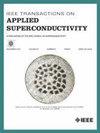Modeling and Simulation of Microwave Kinetic Inductance Detector Readout System Using Simulink and RF Blockset
IF 1.7
3区 物理与天体物理
Q3 ENGINEERING, ELECTRICAL & ELECTRONIC
引用次数: 0
Abstract
Microwave kinetic inductance detectors (MKIDs) represent a class of low-temperature superconducting detectors employed for observing astronomical phenomena spanning the submillimeter through visible bands. Renowned for their intrinsic frequency-division multiplexing capability at microwave frequencies, MKIDs offer the advantage of eliminating the need for complex cryogenic multiplexing electronics. However, the overall readout architecture remains complex, necessitating sophisticated room-temperature electronics. Optimizing overall performance poses a significant challenge. This article introduces a novel approach to behavioral modeling and simulation for the MKID readout system utilizing Simulink and the RF Blockset library. The models incorporate major nonidealities of electronic components to investigate their impacts on system performance. In addition, the model of the MKID array is included based on measured transmission data, ensuring high simulation accuracy. The simulation tool facilitates the study and high-level design of the MKID readout system before delving into hardware implementation.基于Simulink和RF Blockset的微波动态电感探测器读出系统建模与仿真
微波动力学电感探测器(MKIDs)是一类低温超导探测器,用于观测从亚毫米到可见光波段的天文现象。MKIDs以其在微波频率下的固有频分复用能力而闻名,其优点是无需复杂的低温多路复用电子设备。然而,整体读出架构仍然复杂,需要复杂的室温电子设备。优化整体性能是一个重大挑战。本文介绍了一种利用Simulink和RF Blockset库对MKID读出系统进行行为建模和仿真的新方法。这些模型包含了电子元件的主要非理想性,以研究它们对系统性能的影响。此外,基于实测传输数据建立了MKID阵列模型,保证了较高的仿真精度。仿真工具有助于在深入研究硬件实现之前对MKID读出系统进行研究和高级设计。
本文章由计算机程序翻译,如有差异,请以英文原文为准。
求助全文
约1分钟内获得全文
求助全文
来源期刊

IEEE Transactions on Applied Superconductivity
工程技术-工程:电子与电气
CiteScore
3.50
自引率
33.30%
发文量
650
审稿时长
2.3 months
期刊介绍:
IEEE Transactions on Applied Superconductivity (TAS) contains articles on the applications of superconductivity and other relevant technology. Electronic applications include analog and digital circuits employing thin films and active devices such as Josephson junctions. Large scale applications include magnets for power applications such as motors and generators, for magnetic resonance, for accelerators, and cable applications such as power transmission.
 求助内容:
求助内容: 应助结果提醒方式:
应助结果提醒方式:


